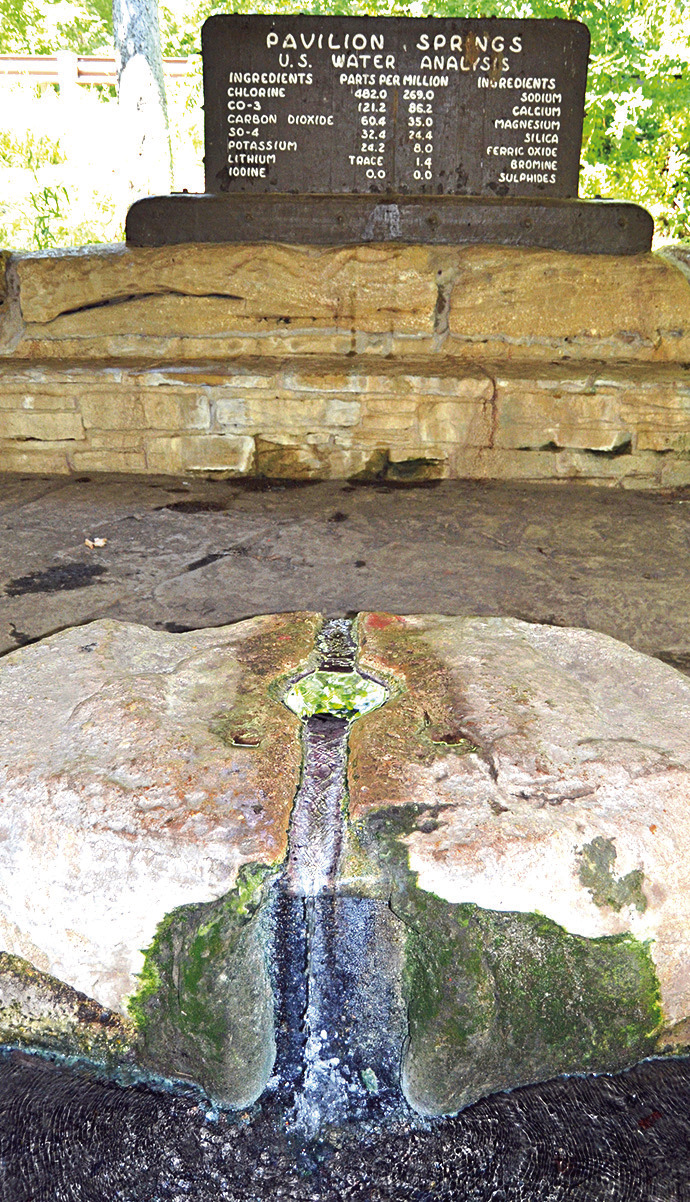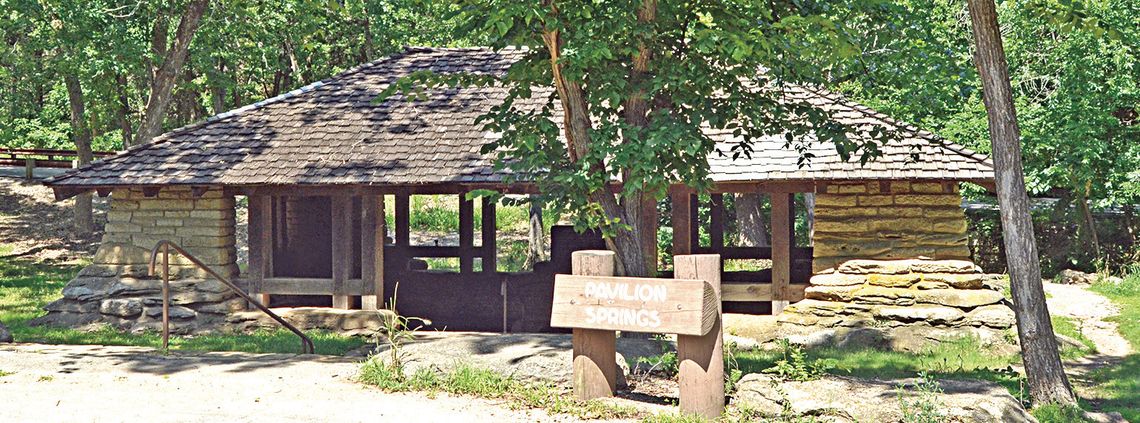Pavilion Springs is located in the Platt National Park Historic District that is now part of the Chickasaw National Recreation Area.
A CNRA publication explains, “A walk through the Historic District of the park takes you back in time. The turn of the 20th century community of Sulphur began in the area of Pavilion Springs.”
The text below is contained on a park service information stand at Pavilion Springs. It explains the significance of the springs in the history of the Sulphur community:
HEALING WATERS
In the late 1890s, the mineral springs rising here had their own two-story pavilion. Water burbled below, and a dance hall sparkled on top. People came from near and far to this resort town called Sulphur Springs, Indian Territory.
Elegant hotels offered luxurious spa vacations for guests “taking the waters.” People drank the spring waters to ease arthritis, stomach problems, and anxiety.
As tourism soared in the early 1900s, the Chickasaw Nation agreed to sell its springs and the surrounding land to the U.S. government. The agreement promised that the “healing waters” would remain free and open to all. The result was Sulphur Springs Reservation, renamed Platt National Park in 1906.
Text by National Park Service
NOTE -- Information not otherwise credited was sourced from “A History of Platt National Park -ACentury of Progress” by local historian Dennis Muncrief. The book is available at the park’s nature center.




